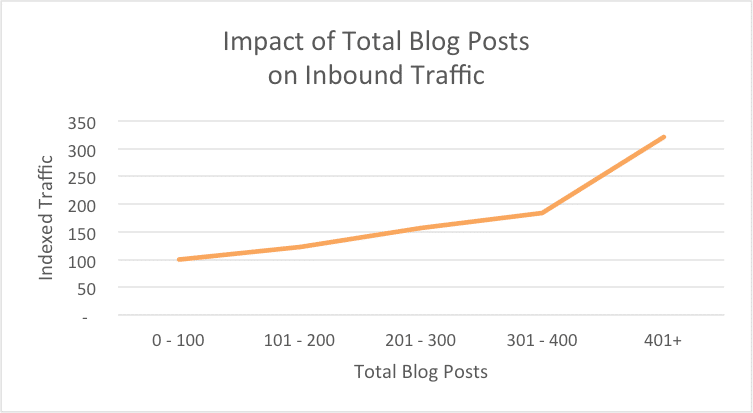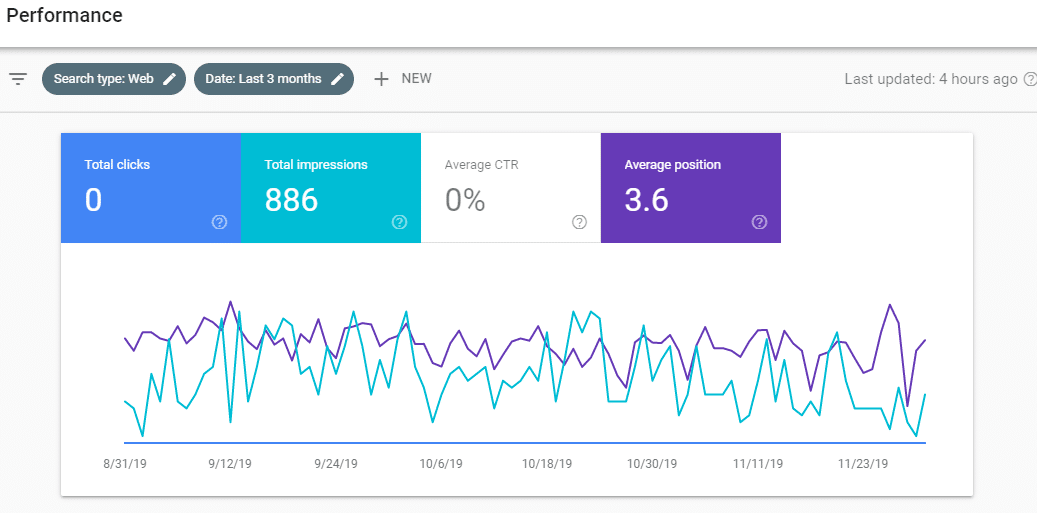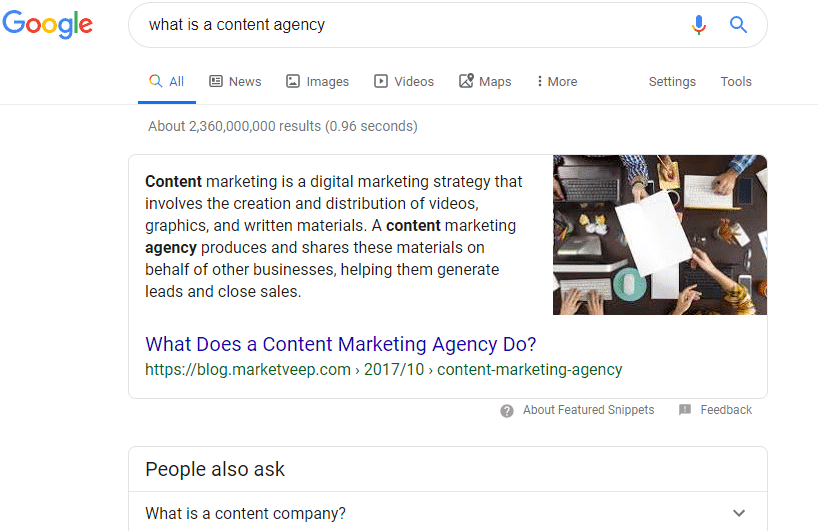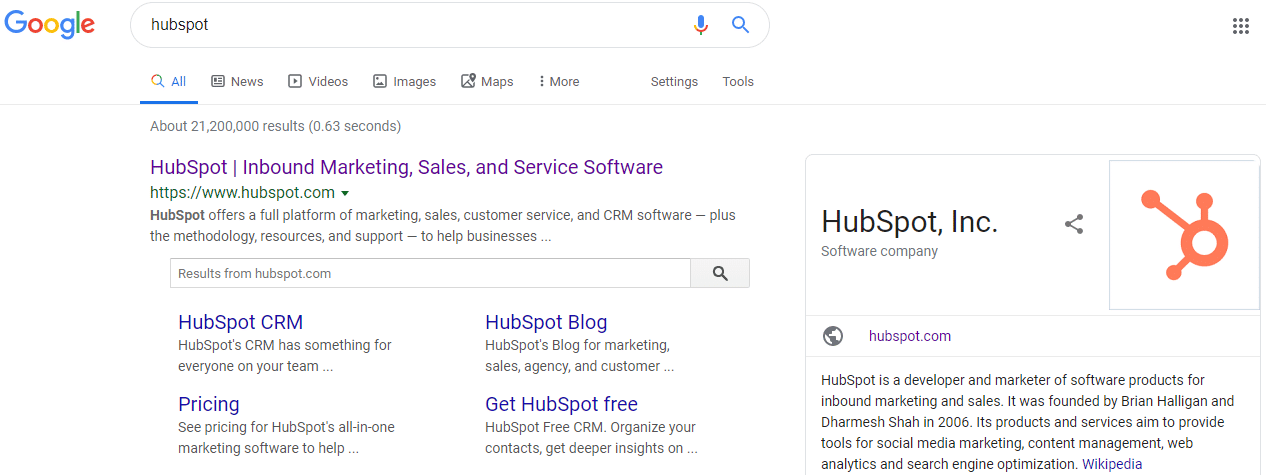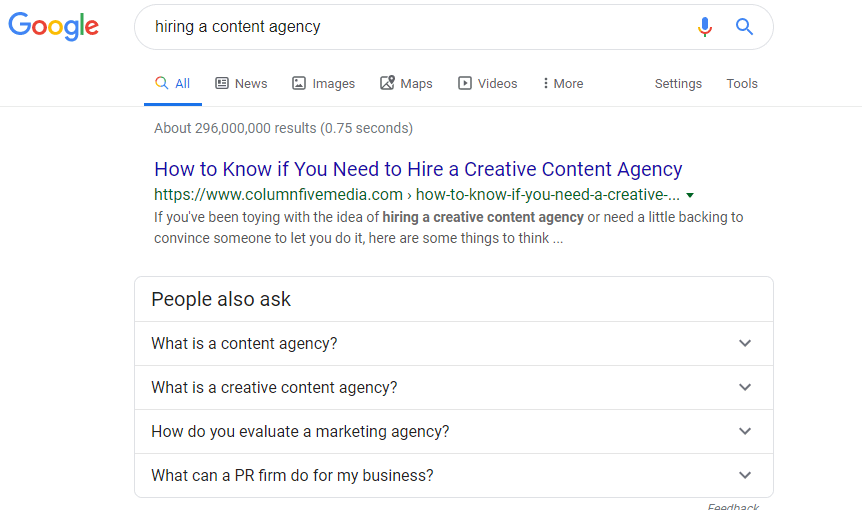I’m going to say something here that will probably upset some startup founders.
You ready? Here it is.
You should plan for a two-year lag from the moment you start creating marketing content to when you see the full returns.
I once said that to a CEO at a small startup I was working with, and his answer was: “Don’t say that. I don’t want to hear that.”
And that response made sense. He was looking for, and measured by, the fastest path to revenue growth possible.
Of course, I’m not saying that your content won’t start to generate returns sooner. If you start with bottom-of-funnel content and focus on the activities that drive leads and revenue, you’re probably going to start bringing in leads and customers long before you hit that two-year mark.
But the full benefits of content marketing come over the long term:
- HubSpot saw significant traffic growth six months after they started their content marketing, and it was only much later that the effects compounded.
- BuzzStream’s research-heavy content generated an explosion in social shares and features on other sites within nine months.
- Ebay’s domain authority started to see significant growth only after two years of consistent, quality content marketing.
And there are a lot of factors that impact how long that takes, including the brand authority you already have, the length of your sales cycle, the price of your product, and more.
In the case of the startup I was working with, we were in a niche industry and in the process of redefining our brand. That meant that we had an uphill battle to fight, and it took two years before we really started seeing the traffic, audience, and, yes, revenue growth that comes from a well run content marketing operation.
The graphic above from HubSpot’s 2015 State of Inbound report demonstrates that the more content you have on your website (blogs, webpages, and other), the more inbound traffic you’ll get. Getting to that level of content – while also providing high-quality answers to the questions your customers are asking – takes time.
In addition to that statistic, here are five other reasons why content marketing is a long-term investment.
1. Brand authority
Many companies view content marketing primarily as a lead gen tool. And it certainly is one. In fact, content is 62 percent less expensive when compared to traditional marketing.
But every time you post a valuable, helpful, and relevant piece of content and your audience reads it, you also show them that:
- You’re proactive in solving problems in the market, even for those people who aren’t currently doing business with you.
- You have creative approaches to solving problems and think through the issues that matter most to them.
- You’re a knowledgeable company who has something unique to offer the market.
These all help with driving lead gen and customer acquisition, but they also build your brand authority. Having an authoritative brand helps your business in a variety of ways:
- Increasing your market share by showing your value vis a vis your competitors
- Reducing advertising costs, since people are more likely to click on an ad for a brand they already know
- Creating and nurturing customer loyalty and trust
- Attracting more (and better) customers
Content marketing is one of the many ways you can grow that brand authority. You can present yourself as a knowledgeable resource to your industry while also helping them understand who you are and what you do.
But building a brand never happens overnight. It’s a multi-year process, if not longer. And how you get there differs significantly from company to company.
It may take time, but the benefits you’ll receive as a result – both tangible and intangible – are worth the wait.
2. Search engine rankings
Can you get me to rank for this term? I’ve heard that question more times than I can count.
And the answer is a resounding: yes, probably.
First of all, the way that most non-marketers consider the term “ranking” doesn’t accurately reflect how Google rankings work. A ranking or position isn’t static. Different users see different pieces of content on their result pages, depending on what the Google algorithm thinks will be most helpful to them.
Instead, search engine marketers focus average position, which takes into account all the ways searchers view your content when looking for specific search terms (see below).
So a “ranking” as is commonly perceived doesn’t exist.
But that only takes into account one reason why focusing on “ranking” and keywords doesn’t matter anymore. Modern SEO has less to do with specific keywords and more to do with user intent, which generally falls into three categories:
- Informational intent, or users looking for an educational answer to a question
- Navigational intent, or users looking for a specific website
- Transactional intent, or users looking to purchase a particular product
Image: Rank for informational intent by answering a question your customer is asking.
Image: Rank for navigational intent by building a unique and authoritative online brand.
Image: Rank for transactional intent by providing content that drives interested buyers along the final stages of their buyer’s journey.
Google figures this out through its RankBrain machine learning program. It’s not something you can outsmart or account for through technical changes to your webpages.
So think of SEO as a reputation-building exercise, not a technical one.
If you’re a new company with a new website, it’s going to take some time to build that reputation. The only way to do that is to create lots of helpful content and use social media, email, and even word of mouth to draw in interested people.
It takes effort and time, for sure. But it’s the way things are done, at least in this current era of search engine functionality. It’s yet another reason why content marketing is a long-term investment.
3. Backlink acquisition
Backlinks are often included in the overall SEO conversation, but they’re so important that I wanted to address them separately and in more detail.
One of the greatest benefits of backlinks is that they are a passive form of marketing that you don’t have to pay for:
- You’re not working to optimize and promote it like you do on your own site.
- You’re not posting regularly and managing an online community like you are with social media.
- You aren’t paying for people’s attention and clicks like you are with paid digital ads.
When someone links to your content, it has the double effect of not only providing a pathway for new people to find and visit your website, but it’s also a tacit signal that the person who linked to your content approves of what you’ve written.
In other words, backlinks lend you credibility from other thought leaders in your space.
But while backlinks should be a big priority, they take time to acquire, especially if you do so organically. So that means that this is a long term strategy, whose return may not come for months or even years.
4. Organic social media following
Different industries and audiences are going to favor different platforms, but taking the ecosystem as a whole, social media is the primary tool in the modern marketer’s tool belt.
Paid ads are often one of the first things that executives and founders think of when it comes to social media. That’s probably because it’s a natural extension of traditional advertising thinking.
But the true power of social media comes when you don’t simply broadcast your content, but build a loyal community of followers.
Your organic reach isn’t just a dull metric that you include in a marketing report. It’s an objective indicator of how far your reach is and, thus, your overall authority in your market.
Plus, you can see who’s following you. That way, you know exactly who your audience is.
As you’re probably well aware from personal use, building an organic following on social media isn’t easy and doesn’t happen quickly. Even channels that are great for organic growth – like Twitter and LinkedIn – don’t see follower counts skyrocket overnight, but slowly grow over time.
But as you’re posting content and worried about the fact that it isn’t “working”, keep this in mind, and keep plugging along, knowing that you’ll see results soon enough.
5. Sales funnel
Content that’s geared toward addressing real-life questions your customers are asking will, eventually, lead to, well, leads.
But anyone in sales knows that the path from becoming a lead to becoming a customer can be long. Any number of obstacles could delay or derail the process.
No matter where you’re bringing people in in relation to the funnel, if you’re a new brand, there will be a time lag between when they convert and when they close, simply because there’s more to learn about. People won’t automatically know exactly what you do, so you’ll need to take the time to educate them.
Not only that, but the people you bring in early on will likely be at a lower price point than the people who come in after you’ve been marketing for years and building up a reputation. At this point, you’ll likely attract larger customers with more money to spend.
But as you grow over time, and people start to become more aware of you and what you have to offer, you’ll catch more people’s attention and, hopefully, entice some of them to buy.
And that’s when the returns will start to roll in.



